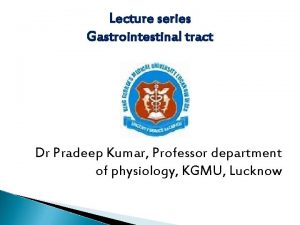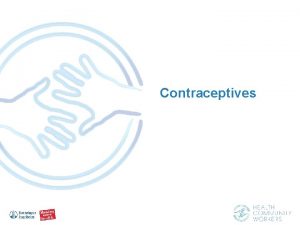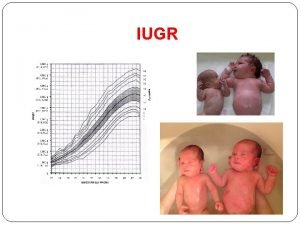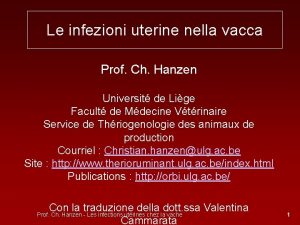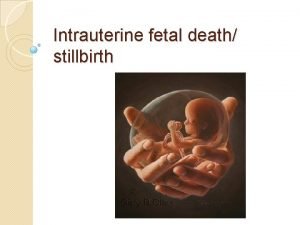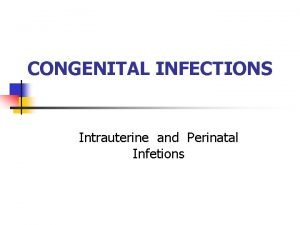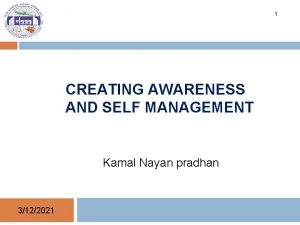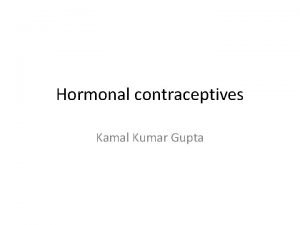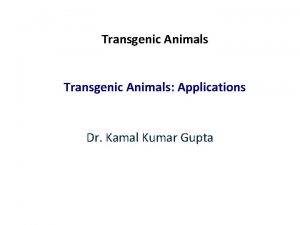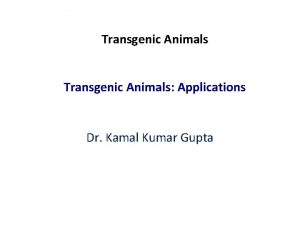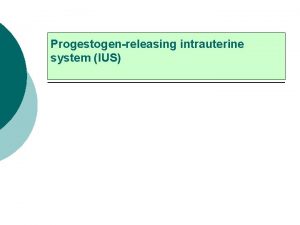Contraceptives Intrauterine Devices Kamal Kumar Gupta Intrauterine Devices























- Slides: 23

Contraceptives Intrauterine Devices Kamal Kumar Gupta


Intrauterine Devices • An intrauterine device (IUD) is a small object made of polyethylene or other polymers that is inserted by a health-care professional into the cavity of the uterus • IUDs prevent fertilization from taking place by blocking sperm from entering the uterine tubes. • Copper T 380 A®, which is approved for up to 10 years of use and has long-term effectiveness comparable to that of tubal ligation • Some women cannot use IUDs because of expulsion, bleeding, or discomfort.

IUD • Non-medicated: First generation IUD, Lippes loop • Medicated: Second generation IUD, Copper IUD • Medicated: Third generation IUD, hormonereleasing IUD

First generation IUD • Inert or nonmedicated devices, usually made up of polyethylene or other polymers • Different shapes and sizes-loops, spirals, coils, rings and bows • Lippes loops are commonly used in developing countries

Lippes loop • Double S shaped made of polyethylene • Nontoxic, non-tissue reactive and extremely durable • Contains small amount of barium sulphate for X ray observation • Attached thread or tail made up of nylon which project in the vagina after insertion • Tail can be felt to ensure that loop is at place • Four sizes A, B, C, D; larger size have greater antifertility effect and lower expulsion rate but higher removal rate because of pain and bleeding


Second generation IUD Copper containing IUD, have strong anti-fertility effect Smaller in size therefore easy to fit Copper-7 Copper T-200 Copper T-220 C Copper T-380 A or Ag Multiload devices such as ML-Cu-250 The number indicates surface area of the copper on the device Cu T-380 Ag indicates silver core over which copper wire is wrapped • Multiload devices are effective upto five years • •

Copper T intrauterine device (IUD) • This IUD is a small device that is shaped in the form of a “T. ” Doctor places it inside the uterus to prevent pregnancy. It can stay in uterus for up to 10 years. Typical use failure rate: 0. 8%.

Intrauterine device (IUD) • Copper containing • Small flexible plastic device containing copper sleeves or wire that is inserted into the uterus • Copper component damages sperm and prevents it from meeting the egg • >99% • Longer and heavier periods during first months of use are common but not harmful; can also be used as emergency contraception



Advantages of copper devices • • • Low expulsion rate Low side effects-pain and bleeding Easy to fit in Increased contraceptive effectiveness Effective as post coital contraceptive, if inserted within 3 -5 days of unprotected intercourse

Third generation IUD • Hormone releasing IUD • Progestasert: T shaped device filled with 38 mg of progesterone, releare in the uterus@65 mcg/day • It effect uterine lining, cervical mucusand sperm • LNG-20, Mirena: T shaped releasing 20 mcg of levonorgestrel • Low pregnancy rate

Intrauterine device (IUD) levonorgestrel • A T-shaped plastic device inserted into the uterus that steadily releases small amounts of levonorgestrel each day • Thickens cervical mucous to block sperm and egg from meeting • >99% • Decreases amount of blood lost with menstruation over time • Effective life 10 years


Mechanism of action of IUD • Causes a foreign body reaction in uterus resulting in cellular and biochemical changes in the endometrium and uterine fluids • Reduces viability of gamete and reduces chances of fertilization • Copper in Cu IUD also alter composition of cervical mucus may effect sperm motility capacitation and survival • Hormone releasing IUD increase the viscosity of cervical mucus and thus prevent the entry of sperm in the cervix • They make endometrium unfavourable for implantation

Change of IUD • Inert IUDs such as Lippes loop can be left as long as they are required • Cu IUD need to be released due to corrosion and mineral deposition on Cu • Same way hormone releasing IUD needs to be changed as the stored hormone may get exhausted

Advantages • Simplicity: simple insertion process, no hospitalization • Can stay in place as long as required • Inexpensive • Reversible

Ideal IUD candidate • • • Has given birth to at least one child No history of pelvic disease Normal menstrual period Willling to check IUD tail Has access to follow up

Timing of insetion • Most preferred time is during menstruation or within 10 days as during this time diameter of cervical canal is more so insertion is easy • First week after pregnancy- chances of expulsion and perforation are high, convenient time 6 -8 weeks after pregnancy

Side effects • Bleeding : greater volume and longer menstrual periods • Pain • Pelvic infection: Pelvic inflammatory disease(PID) • Uterine perforation • Pregnancy • Ectopic pregnancy • Expulsion

 Aminopeptin
Aminopeptin Kamal kumar ips
Kamal kumar ips Dr pulin kumar
Dr pulin kumar Prof. dr. pradeep kumar gupta
Prof. dr. pradeep kumar gupta Pyloric stenosis
Pyloric stenosis Intrauterine device
Intrauterine device Intrauterine
Intrauterine Asymmetrical iugr baby images
Asymmetrical iugr baby images Metricure intrauterine
Metricure intrauterine Small for gestational age causes
Small for gestational age causes Intrauterine device
Intrauterine device Spalding sign
Spalding sign Erytromicyn
Erytromicyn Deepu bhatia
Deepu bhatia Kamal nasr
Kamal nasr Kamal field engineer
Kamal field engineer Kamal sarabandi
Kamal sarabandi Shirin kamal
Shirin kamal Moustapha kamal gueye
Moustapha kamal gueye Kamal ke saman nayan
Kamal ke saman nayan How to learn written english by mostafa kamal
How to learn written english by mostafa kamal Kamal benslama
Kamal benslama Kamal sarabandi
Kamal sarabandi Kamal pratishthan mount litera school
Kamal pratishthan mount litera school



